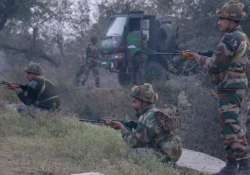'NSG most suited for Pathankot-like operations'
New Delhi: With questions being raised over the Centre's decision to send NSG commandos instead of Army troopers to the IAF base in Pathankot, the chief of the elite force today said the 'black cats'

New Delhi: With questions being raised over the Centre's decision to send NSG commandos instead of Army troopers to the IAF base in Pathankot, the chief of the elite force today said the 'black cats' are the only special force "suited" for undertaking such operations.
"I can say it with full authority that the NSG is a force that is meant for and suited for such operations as the situation in Pathankot warranted. We specialise in counter-terror operations in built-up areas with people around and that was the task given to us.
"I think we accomplished our task with the least collateral damage. This is also the first time that our crack teams were sent in advance to counter a terrorist assault.
Almost every time else in the past, we have been sent after the terrorists had made the first assault," NSG Director General R C Tayal told PTI in an interview.
The DG said the terrorists' "aim" was to destroy the IAF's flying assets and that they were determined to stage a surprise attack in the wee hours after they managed to sneak into the air base.
The January 2 attack on the base, which houses fighter jets and attack helicopters, left 7 security personnel dead. Six militants were also killed.
Tayal added that the commandos of its counter-terror wing had no constraints of weapons or equipment required to operate in such conditions.
"We got what we wanted then and there. As soon as my commander asked for troop carriers, the Army sent them in from their nearby cantonment. The troops had with themselves night vision devices, see-through gadgets and corner-shot weapons. It was decided by on-ground commanders to locate the terrorists, box them and hit them, which they successfully did," he said.
The DG said NSG was divided into three teams inside the air base.
"One took guard where the aircraft hangar is located, one was made to secure the residential units of the IAF personnel and the third took charge to engage the terrorists who had sneaked in," he said.
The NSG chief accepted that his commandos were up against a "well trained and equipped" enemy and the force had a single "unfortunate" casualty of its bomb disposal commanding officer Lt Col Niranjan E K and injuries to nine other commandos.
Tayal, who himself camped at the forward air base begining January 3, said NSG Inspector General (Operations) was the overall coordinating authority between the multiple agencies--the IAF, Army, Punjab police and the NSG.
"Our IG operations was coordinating with everyone. He was independent. I wouldn't like to go into who was the commander or something like that but I can tell you that there was not a single point of confusion or an attempt to undermine anyone's authority. There was excellent coordination between all the forces who were tackling the terrorists in Pathankot," he said while refusing to go into the details of the operation. Tayal said it took a long time for the agencies to call off the operation as commandos were tasked to sanitise numerous buildings "floor-by-floor and room-by-room" to check against hidden improvised bombs and booby-traps and that no one is hiding inside.
The NSG had named the operation 'Dhangu Surakasha' borrowing the first name from the village where the Indian Air Force base is located and the latter word from their motto-- 'Sarvatra Sarvottam Suraksha' (Best security everywhere).
About 300 commandos, in three batches, were part of the operation and they were first flown to Pathankot on a RAW plane on the evening of January 1.
Among the injured commandos, one has lost his left eye due to the impact of a blast, while the other received shrapnel injuries to his head.